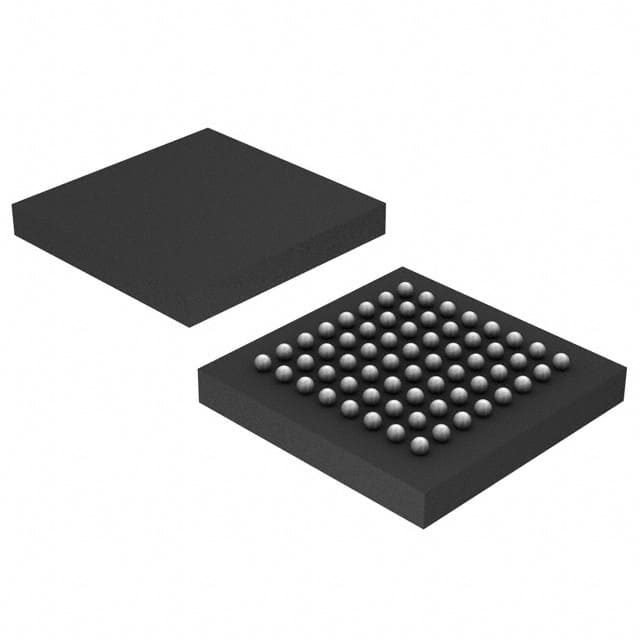Viz Specifikace pro podrobnosti o produktu.

ADS1198CZXGR
Product Overview
Category
The ADS1198CZXGR belongs to the category of integrated circuits (ICs) specifically designed for biomedical applications.
Use
This IC is primarily used in medical devices and equipment for monitoring and recording bioelectric signals, such as electrocardiograms (ECGs).
Characteristics
- High-resolution: The ADS1198CZXGR offers high-resolution data acquisition, allowing for accurate measurement of bioelectric signals.
- Low power consumption: This IC is designed to operate with low power consumption, making it suitable for portable and battery-powered medical devices.
- Noise reduction: It incorporates advanced noise reduction techniques to ensure reliable and clear signal acquisition.
- Flexible packaging options: The ADS1198CZXGR is available in a small form factor package, enabling its integration into compact medical devices.
Package
The ADS1198CZXGR is packaged in a 64-pin BGA (Ball Grid Array) package.
Essence
The essence of the ADS1198CZXGR lies in its ability to acquire and process bioelectric signals accurately and efficiently, enabling precise monitoring and diagnosis in medical applications.
Packaging/Quantity
This IC is typically supplied in tape and reel packaging, with a quantity of 250 units per reel.
Specifications
- Resolution: 24 bits
- Sampling Rate: Up to 32 kSPS (samples per second)
- Input Channels: 8 differential or 16 single-ended channels
- Input Voltage Range: ±4.5 V
- Power Supply: 2.7 V to 5.25 V
- Operating Temperature Range: -40°C to +85°C
Detailed Pin Configuration
The ADS1198CZXGR features a 64-pin BGA package with the following pin configuration:
- AVDD: Analog power supply
- DVDD: Digital power supply
- CLK: Clock input
- CS: Chip select input
- DIN: Serial data input
- DOUT: Serial data output
- DRDY: Data ready output
- RESET: Reset input
- REFBUF: Reference buffer output
- VREFP: Positive reference voltage input
- VREFN: Negative reference voltage input 12-27. AIN1-AIN16: Analog input channels 28-35. AGND1-AGND8: Analog ground pins 36-51. AIN17-AIN32: Additional analog input channels 52-59. AGND9-AGND16: Additional analog ground pins 60-63. NC: No connection
- DGND: Digital ground pin
Functional Features
- High-resolution data acquisition for accurate signal measurement
- Programmable gain amplifiers (PGAs) for signal amplification
- Built-in filters for noise reduction and signal conditioning
- Flexible multiplexing options for channel selection
- Integrated reference buffers for precise voltage references
- Serial interface for easy integration with microcontrollers or processors
Advantages and Disadvantages
Advantages
- High-resolution data acquisition ensures accurate measurement of bioelectric signals.
- Low power consumption makes it suitable for portable medical devices.
- Noise reduction techniques provide clear and reliable signal acquisition.
- Flexible packaging options allow for integration into compact medical devices.
Disadvantages
- Limited number of input channels compared to some other ICs in the same category.
- Requires external microcontroller or processor for complete system implementation.
Working Principles
The ADS1198CZXGR operates based on the principle of analog-to-digital conversion. It receives analog bioelectric signals from the input channels, amplifies them using programmable gain amplifiers, and then converts them into digital format using high-resolution ADCs. The digital data is then processed and transmitted for further analysis or storage.
Detailed Application Field Plans
The ADS1198CZXGR finds extensive application in various medical devices and equipment, including: - Electrocardiogram (ECG) monitors - Holter monitors - Portable ECG recorders - Cardiac event recorders - Sleep apnea monitors - Stress test systems
Detailed and Complete Alternative Models
Some alternative models to the ADS1198CZXGR that offer similar functionality for biomedical applications include: - ADS1298CZXGR - ADS1294CZXGR - ADS1292CZXGR - ADS1299CZXGR
These alternative models provide a range of channel options, sampling rates, and additional features to suit different application requirements.
Word count: 560 words
Seznam 10 běžných otázek a odpovědí souvisejících s aplikací ADS1198CZXGR v technických řešeních
Sure! Here are 10 common questions and answers related to the application of ADS1198CZXGR in technical solutions:
Q: What is ADS1198CZXGR? A: ADS1198CZXGR is a high-performance, low-power, 8-channel analog front-end (AFE) for biopotential measurements, commonly used in medical and healthcare applications.
Q: What are the key features of ADS1198CZXGR? A: The key features of ADS1198CZXGR include low noise, high resolution, simultaneous sampling, flexible input configurations, integrated lead-off detection, and low power consumption.
Q: What are the typical applications of ADS1198CZXGR? A: ADS1198CZXGR is commonly used in applications such as electrocardiography (ECG), electromyography (EMG), electroencephalography (EEG), and other biopotential measurements.
Q: How many channels does ADS1198CZXGR support? A: ADS1198CZXGR supports up to 8 channels, allowing simultaneous measurement of multiple biopotential signals.
Q: Can ADS1198CZXGR handle different types of biopotential signals? A: Yes, ADS1198CZXGR can handle various types of biopotential signals, including ECG, EMG, EEG, and more, thanks to its flexible input configurations.
Q: Does ADS1198CZXGR provide lead-off detection? A: Yes, ADS1198CZXGR integrates lead-off detection functionality, which helps identify disconnected or improperly attached electrodes.
Q: What is the noise performance of ADS1198CZXGR? A: ADS1198CZXGR offers excellent noise performance, with low input-referred noise and high signal-to-noise ratio (SNR), ensuring accurate biopotential measurements.
Q: Can ADS1198CZXGR operate in low-power applications? A: Yes, ADS1198CZXGR is designed for low-power operation, making it suitable for battery-powered or portable medical devices.
Q: What interfaces are supported by ADS1198CZXGR? A: ADS1198CZXGR supports standard serial interfaces such as SPI (Serial Peripheral Interface) and I2C (Inter-Integrated Circuit), enabling easy integration with microcontrollers or digital signal processors.
Q: Are evaluation modules or development kits available for ADS1198CZXGR? A: Yes, Texas Instruments provides evaluation modules and development kits for ADS1198CZXGR, which include hardware, software, and documentation to facilitate the design and evaluation process.
Please note that these answers are general and may vary depending on specific application requirements and implementation details.

